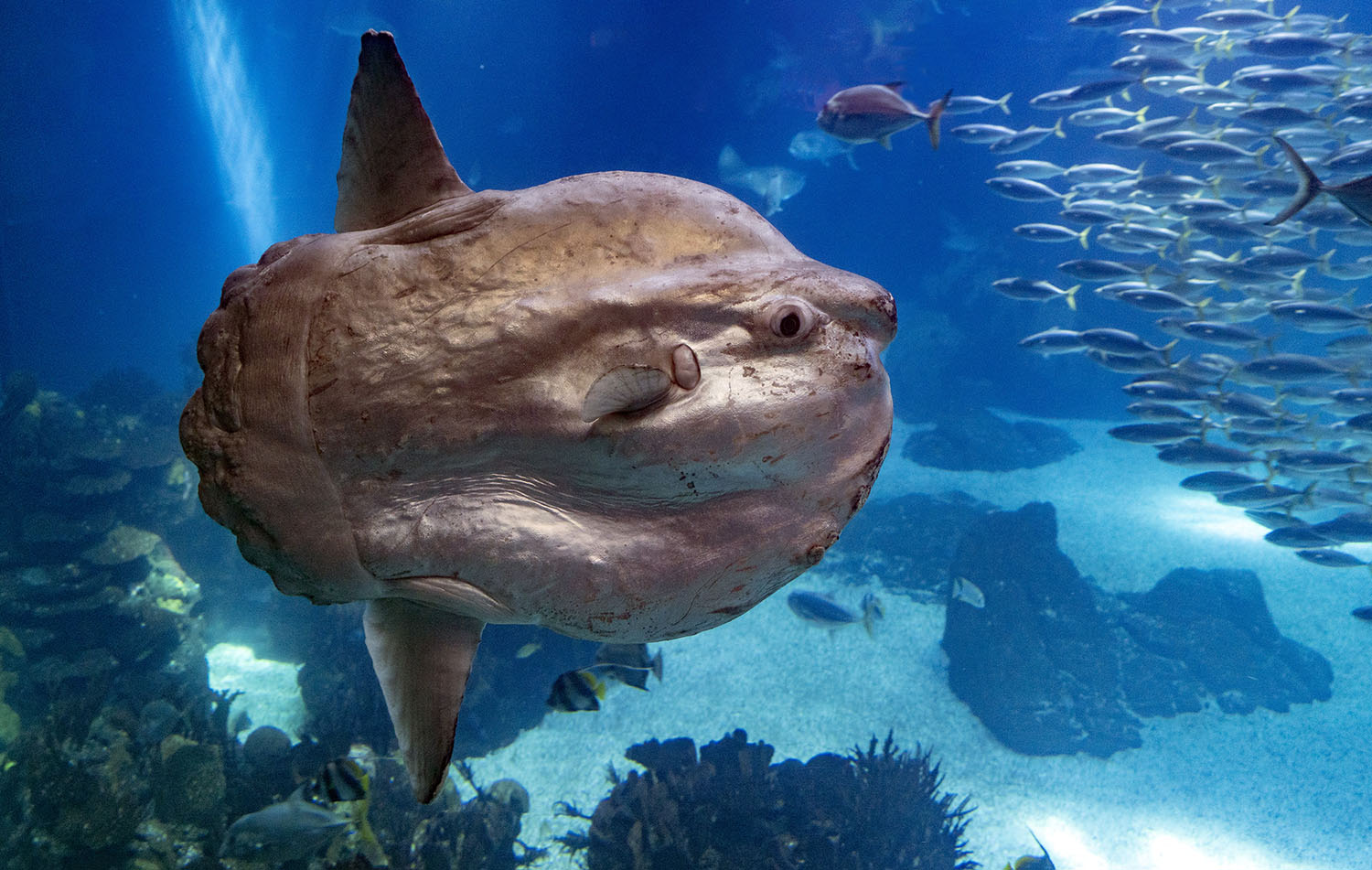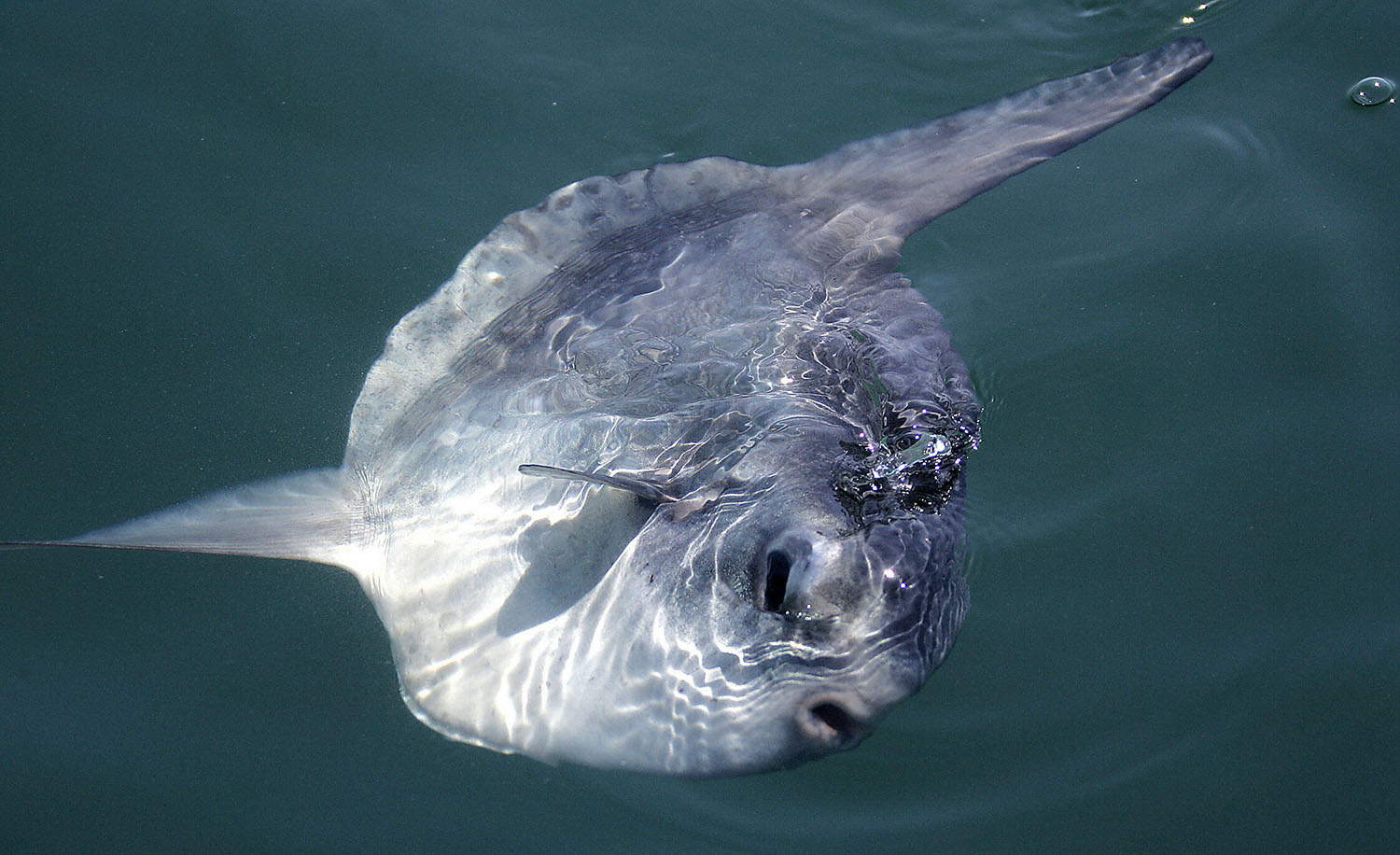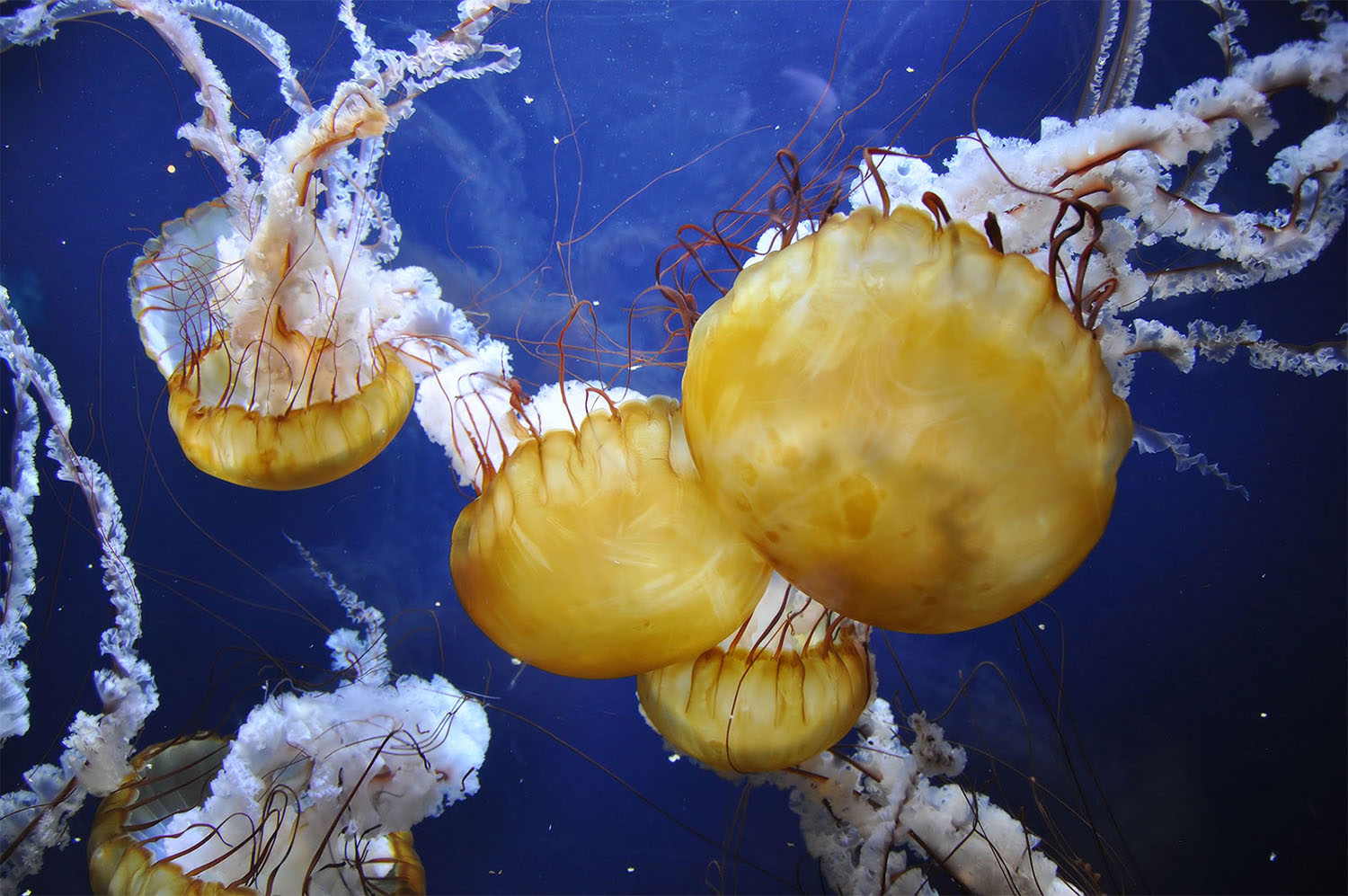The Lonely Sunfish
An aquarium sunfish stopped eating, until workers realized what it needed.

© Andrea Izzotti/stock.adobe.com
Sunfish, like the one seen here in the ocean, normally like to be alone.
Apparently fish can get lonely for the company of…people. An ocean sunfish at an aquarium in Japan was so affected by the absence of human visitors that it stopped eating. Then caretakers came up with a novel solution.
The sunfish has its own enclosure at the Kaikyokan aquarium (the Shimonoseki Marine Science Museum in Shimonoseki, Japan). This makes sense since ocean sunfish live alone in the wild. Still, while its species (also known as mola) is known for being solitary, the Kaikyokan sunfish seemed curious about other living things and often swam to the front of its tank to investigate human visitors.
But when the aquarium closed for renovations, there were no visitors. The sunfish stopped eating.
Caretakers struggled to figure out what was wrong. Thinking the fish had digestive issues, caretakers reduced its food portions. There was also the possibility that the construction sounds were a source of stress, so caretakers stopped by to offer comfort to the sunfish. Nothing worked.
Then one staff member came up with an unusual idea—one that might trick the sunfish into thinking the visitors had returned.
“We were skeptical but decided to do anything we could,” aquarist Moe Miyazawa told the Associated Press.
Caretakers dressed human-shaped cutouts in their uniforms and placed the cutouts where visitors normally stand. The next morning, the sunfish ate for the first time in a week.
“I knew [the sunfish] was looking at us when we were placing [the cutouts], but I never thought it would start eating the next day,” Miyazawa said.
Staff member Mai Kato says she hopes the sunfish will get plenty of attention when the aquarium reopens.
“When the renovation work is finished, I’d like visitors to wave to it in front of the tank,” Kato told the Mainichi, a newspaper in Japan.



